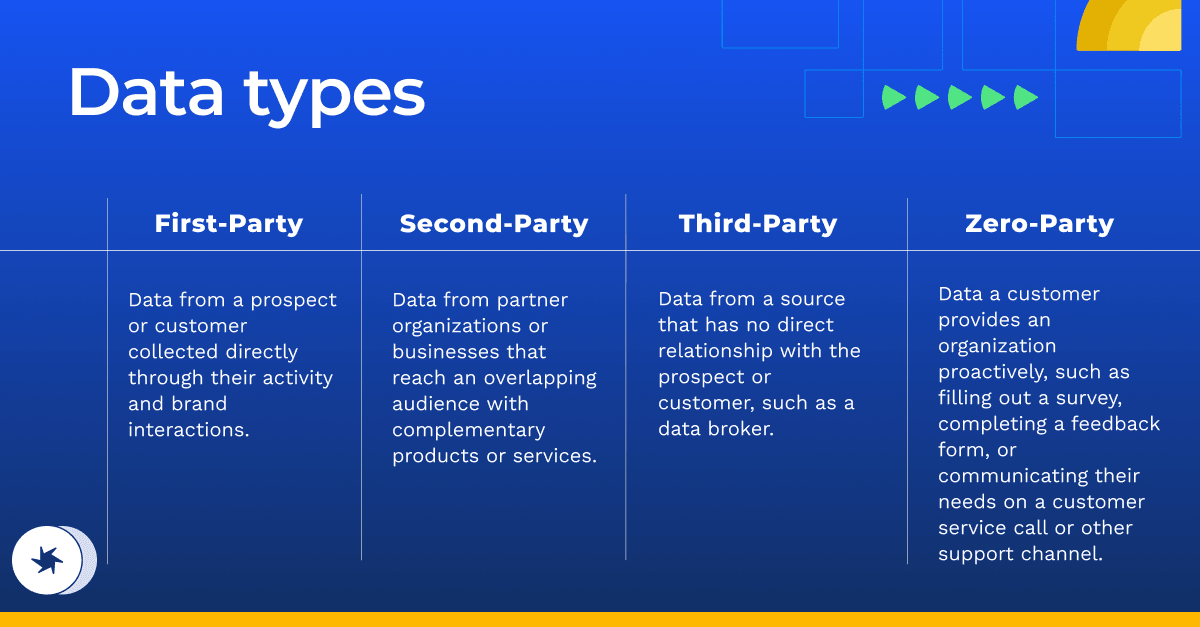How to create a first-party data strategy
A first-party data strategy should evolve as the organization grows and customer needs change, empowering any organizational team to activate data in valuable ways.
The following best practices will help create or refine a first-party data strategy.
Align team and organizational goals
By having a clear understanding of the business goals and a benchmark for the organization’s current performance, teams can identify new goals — such as increase customer retention or lifetime value — and then identify how first-party data can help accomplish those goals.
Identify the customer data sources
Using customer journey maps as a guide, organizations should identify the many channels customers use to engage with the organization. Within each channel, identify what customer data the organization can collect and whether that data is helpful for tailoring the customer experience. From there, teams will also need to determine how those data sources can be collected, stored, and centralized in a data warehouse.
Review and refine the martech stack
Once an organization understands its customer journeys and the associated data at each step of those journeys, it’s important to review the martech stack. This helps the organization understand how customer data is stored and activated across marketing, sales, and business intelligence tools.
Enforce data quality and compliance
Create guidelines around how customer data is collected, formatted, stored, and updated. Confirm with the security and data teams that the implementation is compliant with all security and privacy regulations. It’s also critical to audit for potential vulnerabilities.
Begin collecting and activating data
With the foundation set, the organization can begin collecting data or performing data ingestion, in which customer data is moved into a data warehouse. It is then activated to execute campaigns across channels and tools.
Refine over time
Continually revisit the first-party data strategy to ensure it best positions the organization to make full use of its data collection and activation opportunities.



